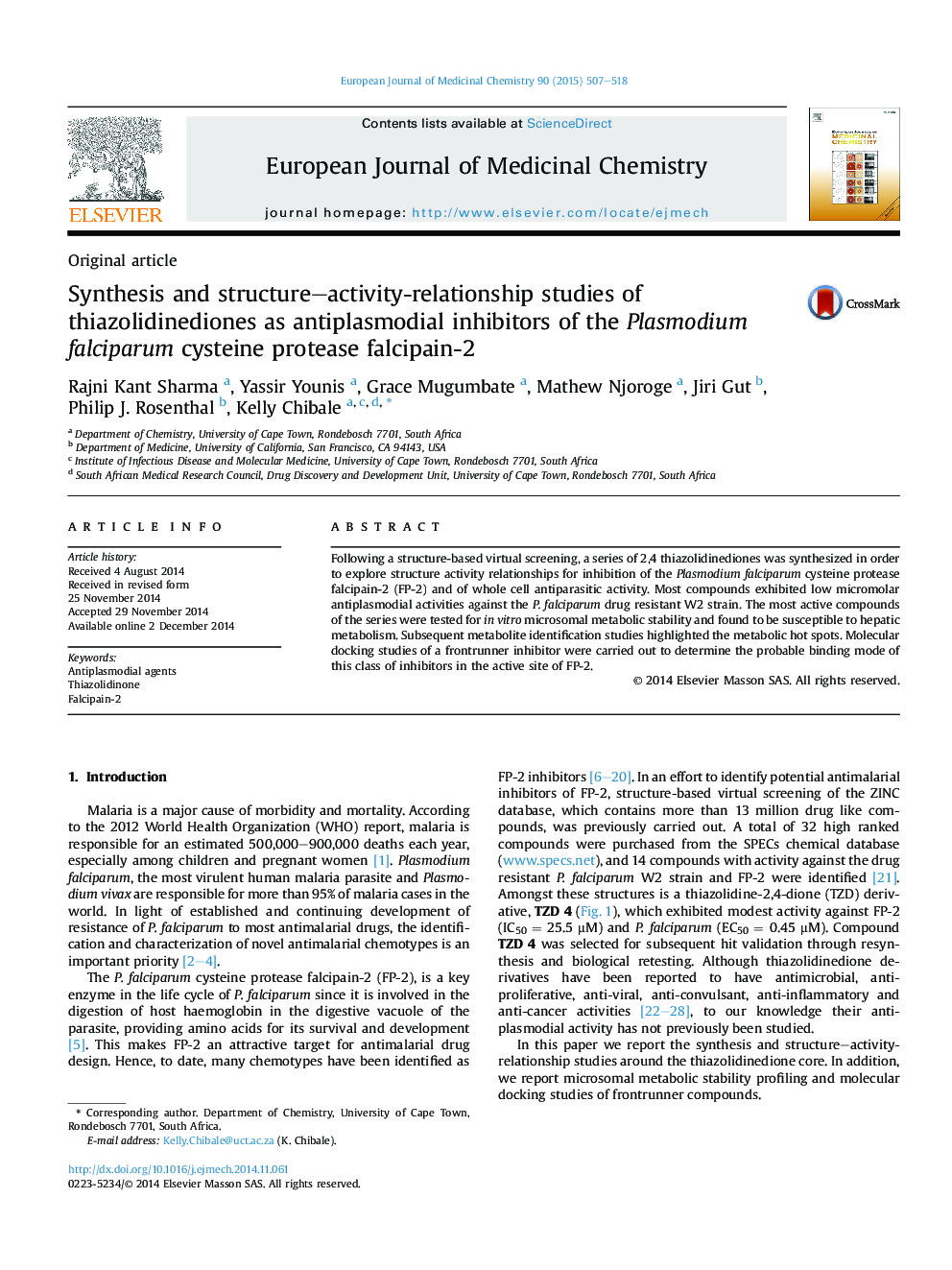| Article ID | Journal | Published Year | Pages | File Type |
|---|---|---|---|---|
| 1395505 | European Journal of Medicinal Chemistry | 2015 | 12 Pages |
•SAR studies show key structural features for optimal antiplasmodial activity.•In silico docking with falcipain-2 provides insight into requirements for activity.•Microsomal metabolic stability was identified as a major liability.•Metabolite identification studies revealed metabolic hot spots.
Following a structure-based virtual screening, a series of 2,4 thiazolidinediones was synthesized in order to explore structure activity relationships for inhibition of the Plasmodium falciparum cysteine protease falcipain-2 (FP-2) and of whole cell antiparasitic activity. Most compounds exhibited low micromolar antiplasmodial activities against the P. falciparum drug resistant W2 strain. The most active compounds of the series were tested for in vitro microsomal metabolic stability and found to be susceptible to hepatic metabolism. Subsequent metabolite identification studies highlighted the metabolic hot spots. Molecular docking studies of a frontrunner inhibitor were carried out to determine the probable binding mode of this class of inhibitors in the active site of FP-2.
Graphical abstractFigure optionsDownload full-size imageDownload as PowerPoint slide
